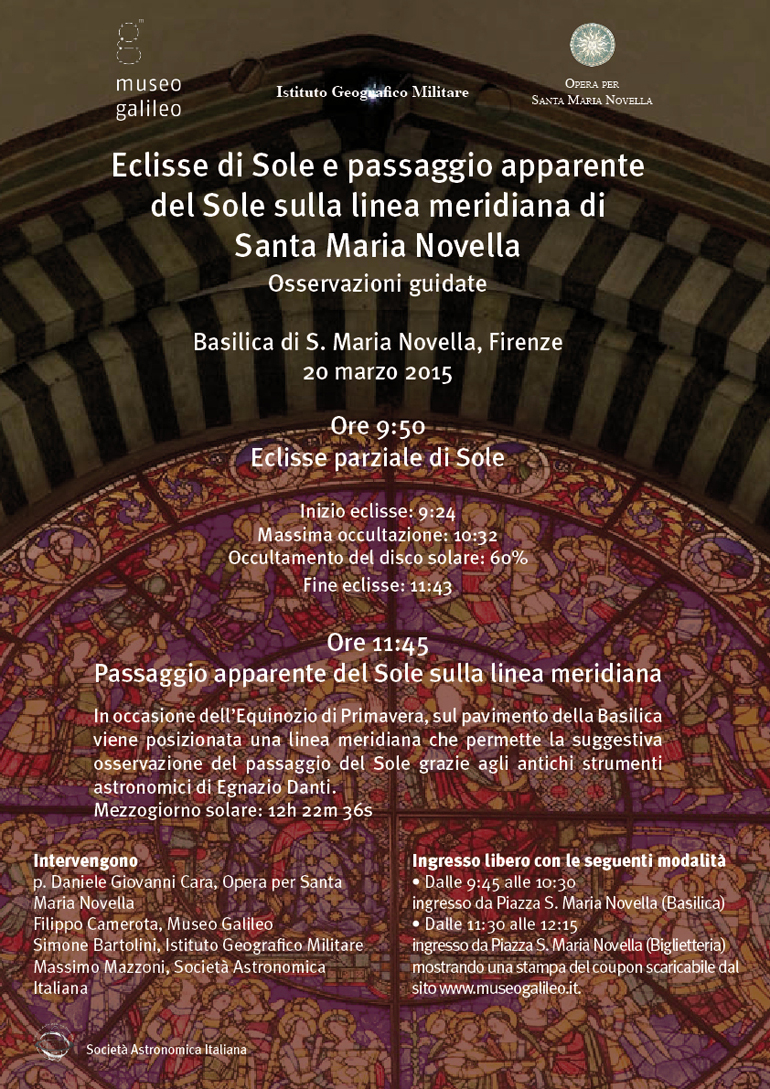
Church of S. Maria Novella, Florence
20 March 2015
9.50 am: partial eclipse of the Sun
11.45 am: apparent transit of the Sun on the meridian line
On the occasion of the Spring Equinox, the meridian line positioned on Santa Maria Novella’s floor will allow participants to observe the Sun’s passage thanks to the ancient astronomical instruments by Egnazio Danti.
Eclipse begins at: 9:24 am
The maximum eclipse will be at: 10:32 am
60% of the solar disk will be covered
Eclipse ends at: 11:43 am
Solar noon: 12h 22m 36s
Speakers
p. Daniele Giovanni Cara, Opera per Santa Maria Novella
Filippo Camerota, Museo Galileo
Simone Bartolini, Istituto Geografico Militare
Massimo Mazzoni, Società Astronomica Italiana
Free admission as follows:
• From 9:45 am to 10:30 am: entrance from Piazza S. Maria Novella (Church)
• From 11:30 am to 12:15 pm: entrance from Piazza S. Maria Novella (Ticket office), presenting this coupon.
The event will be held (in Italian) even if cloudy.
Between 1572 and 1575, the cosmographer Egnazio Danti (1536-1586) installed on the façade of Santa Maria Novella no less than three astronomical instruments: a great quadrant with sundials, an equinoctial armillary, and two “camera obscura” gnomons. These instruments were designed to be used for new astronomical calculations linked to the project for reforming the Julian calendar, which would have definitively re-established the exact liturgical date of Easter and the related movable feast days. Danti was convinced that the problems of the day relevant to the calendar were so complicated as to call for an overall revision of what was known of the Sun movements. Favoured by the patronage of Cosimo I de’ Medici, a supporter of the reform project subsequently implemented by Pope Gregory XIII, Danti spent the last years of his stay in Florence constructing astronomical monuments. Although these gnomons were designed in 1575, Danti was unable to complete the tracing of the meridian line on the floor of the church. He only opened gnomonic holes, first in the glass of the rose window, then on the church’s façade, much higher, and made two opening in the vaulting as well, through which rays of light would pass only during the equinoxes and the winter solstice.
-
Useful linksPdf resources
- Flyer (in Italian)


